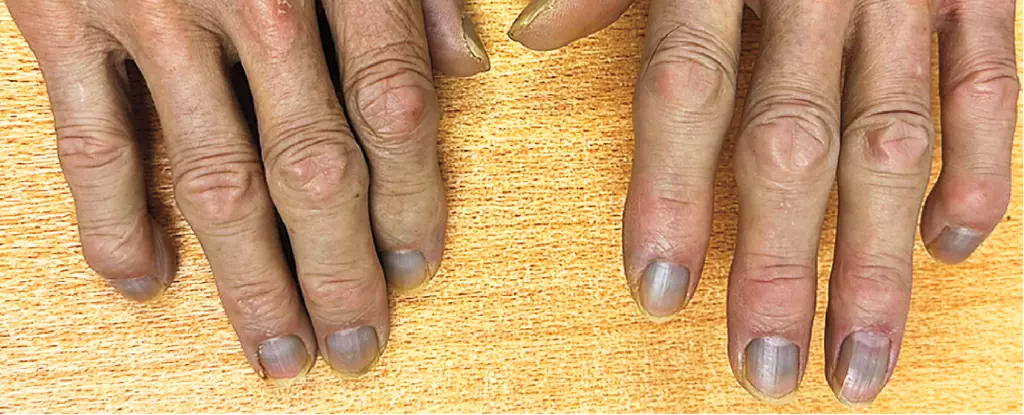Argyria is an uncommon condition that captivates both the medical community and the general public due to its striking cosmetic effects and underlying causes. Recently, an intriguing case involving an 84-year-old man surfaced, revealing this rare disorder’s mechanisms and implications. Presenting with complications related to urinary flow, the patient surprised clinicians with an unusual grayish sheen enveloping his skin, eyes, and nails—an appearance that began five years earlier. This unusual color served as a crucial clue to unearthing the mystery behind his deteriorating health.
Blood tests conducted by healthcare professionals quickly identified an overwhelming concentration of silver in the man’s system, over 40 times greater than normal levels. This detected excess was responsible for his argyria, a condition in which silver deposits accumulate in various body tissues, particularly in the membrane layers of sweat glands, blood vessels, and dermal fibers. The silver’s presence manifests visually through a slate-gray hue—an effect so pronounced that it places affected individuals in an often misunderstood category of metallic toxicity.
Historically, argyria has typically been associated with artisans and miners who were regularly exposed to silver particles, yet this case defies conventional patterns. Though the patient’s occupational history as a waiter did not indicate notable exposure to the metal, his case highlights the more obscure pathways through which silver can enter the body. The ongoing use of colloidal silver, a substance that has gained popularity as an antimicrobial agent, further complicates the narrative. Despite the lack of scientific backing for its effectiveness, colloidal silver is frequently marketed without strict regulation, leading to an increased risk of inadvertent consumption.
The route of silver entry into the human body is multi-faceted, encompassing inhalation, dermatological absorption, and ingestion via the digestive tract. Once within the system, charged silver ions are disseminated throughout the body, interacting with ultraviolet rays from sunlight to form particles that can alter skin pigmentation. This biochemical reaction is not merely cosmetic—understanding how silver interacts physiologically can provide crucial insights into preventing or mitigating argyria in vulnerable populations.
Potential Health Impacts of Silver Buildup
Though visually striking, the gray discoloration often associated with argyria is not the most significant health concern that presents with high silver levels. Research indicates that at substantial concentrations, silver buildup may interfere with the absorption of certain medications, including antibiotics and thyroid hormones like thyroxine. Despite these complications, the long-term prognosis for patients dealing with argyria is generally optimistic. Barring extremely high concentrations—a rare occurrence—overall health implications remain relatively benign.
For the patient in question, the exact source of silver exposure continues to evade explanation. Without identifiable environmental contaminants or occupational hazards linked to the metal, the mystery deepens. As he navigates life with a persistent slate-gray complexion, one pressing question looms: How can we better understand and address silver exposure in today’s context? Conducting further epidemiological studies and monitoring for argyria manifestations can guide medical professionals in recognizing potential outbreaks of similar cases.
The case of the 84-year-old man with argyria sheds light on a rare yet fascinating phenomenon that requires ongoing awareness and research. The implications of silver toxicity carry significance not only for individual patients but for public health protocols regarding substances that exhibit therapeutic promise without sound scientific validation. As medical professionals continue to monitor this unique patient’s situation, understanding the origins of silver and its effects becomes increasingly crucial. The growing popularity of unregulated silver products demands vigilance from both healthcare providers and consumers, ensuring safety as we navigate the complexities of alternative remedies.

